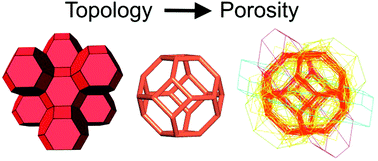Topology versus porosity: what can reticular chemistry tell us about free space in metal–organic frameworks?†
Abstract
We present the results of a comprehensive geometrical and topological analysis of 3D coordination networks in 33 790 coordination polymers. We have found relations between topological descriptors and free space of the networks, and have revealed topological types that promote high porosity of metal–organic frameworks.

- This article is part of the themed collections: Chemical Communications HOT Articles and Functional Coordination Networks


 Please wait while we load your content...
Please wait while we load your content...